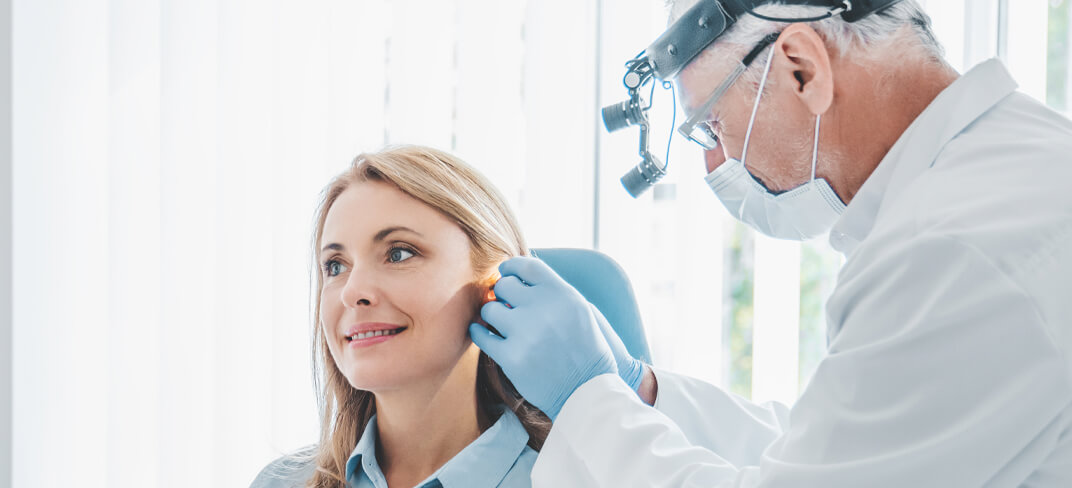MRI-Compatible Hearing Prosthesis: Interview with Dr. Cantore

At UPMC Salvator Mundi International Hospital, a highly innovative procedure was recently performed to implant the Cochlear Osia 3 device, a next-generation hearing prosthesis that is fully compatible with all types of Magnetic Resonance Imaging (MRI). This procedure is among the first of its kind in Lazio and in Italy, marking a significant advancement in the treatment of sensorineural and conductive hearing loss.
This new technology opens promising therapeutic possibilities and can substantially improve patients' quality of life.
We spoke with Dr. Italo Cantore, an ENT specialist, and the head of the surgical team that performed the procedure.
Dr. Cantore, What Is This New Device for Treating Hearing Loss?
The Cochlear Osia 3 is one of the first active bone conduction hearing implants in Italy with the unique feature of being fully MRI-compatible. It’s a state-of-the-art device representing the latest evolution of implantable prostheses, which we have been using for over a year at UPMC Salvator Mundi International Hospital. This type of surgery is performed on both Italian and international patients who choose our center in Rome to access technologically advanced solutions for the treatment of conductive, mixed, or external ear hearing loss.
Why Is MRI Compatibility an Advantage for Patients?
The device features an innovative magnet that automatically rotates and aligns with the magnetic field during MRI scans, allowing the patient to undergo the exam safely and without limitations. This is a crucial benefit, especially for patients who require regular MRI scans, such as those with oncological, neurological, or chronic conditions. The ability to access advanced diagnostic imaging safely is essential, as it significantly improves quality of life and enhances the effectiveness of treatment pathways.
What Types of Hearing Loss Is This Device Suitable For?
Cochlear Osia 3 is indicated for several types of hearing loss:
- Conductive hearing loss.
- Mixed hearing loss, whether unilateral or bilateral.
- Single-sided deafness or total hearing loss in one ear.
This broad applicability makes the prosthesis an extremely versatile solution, suitable for patients with different needs and clinical conditions. It is particularly helpful in cases where traditional hearing aids are ineffective or poorly tolerated.
Can You Tell Us About the First Surgery with This Prosthesis at UPMC Salvator Mundi International Hospital?
The first Osia 3 hearing prosthesis implanted at UPMC Salvator Mundi International Hospital was performed on a patient with a complex clinical history. Several years earlier, the patient had undergone surgery for cholesteatoma, a particularly aggressive form of chronic otitis that can damage the ear’s bony structures. That surgery successfully removed the disease without recurrence, but it left behind a moderate-to-severe hearing deficit, which is common in such cases.
We then initiated a thorough assessment process, including an ENT consultation, audiological testing, and radiological imaging. Once the patient was deemed a suitable candidate, he was admitted and underwent the procedure under general anesthesia, which lasted about an hour. The patient was discharged the following morning in good condition.
After about a month, the time needed for the osseointegration, we activated the device. The outcome was very positive, with a good recovery of hearing function and a significant improvement in the patient's quality of life.
So, an important result?
Absolutely. The implantation of the Osia 3 prosthesis represents a major step forward in the treatment of hearing loss, combining the benefits of surgical intervention with full compatibility for MRI and other advanced diagnostic tests. All of this translates into greater safety, therapeutic effectiveness, and, most importantly, a tangible improvement in patients' quality of life.
Learn more about the ENT services at UPMC Salvator Mundi International Hospital and book an appointment today with one of our hearing implant specialists.